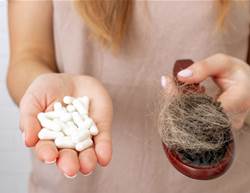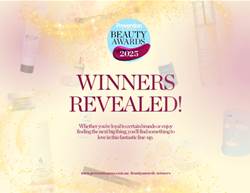Like your skin, your hair goes through an ageing process. But rather than wrinkles, you’re left with dull, lifeless locks. Lots of things can impact your shine, volume, and colour as you get older, like naturally drier skin, changes in your hair follicles, and even genetics-all of which can simply be out of your control.
The good news? Tweaking your hair routine, diet, and investing in top-notch products can bring your strands back to life. If you miss your thicker, more vibrant hair, let the following experts explain what’s happening. Then, try their best tricks to restore your hair’s colour, fullness, and shine to its former glory-no matter your age.
The issue: coarse, dull strands
Your skin naturally gets drier with age-and that includes your scalp. “When oil glands on the scalp slow down production, your hair feels drier and looks less glossy, and it may be prone to frizz and breakage,” says dermatologist Dr Ted Lain who specialises in hair disorders.
How to get shiny hair: Wash your hair only two or three times a week to help it hold on to its natural oils, and when you do shampoo, use a hydrating or smoothing formula to help nourish hair, says celebrity hairstylist Matt Fugate.
Then, once a week, try this DIY treatment: Spread a scoop of coconut oil on the bottom half of your dry hair; leave it in for an hour, then shampoo. “Coconut oil conditions and decreases hair’s protein loss, helping it stay resilient,” says dermatologist Dr Francesca Fusco.
Also, amp up your intake of protein and omega-3 fatty acids, since both can help hair grow in stronger and more lustrous. “Aim to have three servings of protein-rich meat, fish, nuts, or yoghurt and at least one serving of healthy fats in foods like avocado, salmon, and walnuts daily,” says Dr Fusco.
The issue: lack of volume
Thick hair is known as a sign of youth for a reason. “Around our late 30s or our 40s, the diameters of our hair follicles start to shrink, causing individual hairs to grow in finer,” says Dr Fusco.
How to boost hair volume: To bulk up wispy strands, consider tweaking your cut. “If you have straight hair, a blunt haircut keeps weight in your style so it looks fuller,” says Fugate. “A few layers in the front are flattering, but too many choppy ones all over can zap volume.”
If you have curls, however, layers create the opposite effect, helping them stay bouncy and full. A simple styling trick can also make a big difference on all hair types. “Blow-dry your hair until it’s about 50 per cent dry, then apply a volumising product throughout the top sections-this way, it won’t get diluted by fully wet hair,” says Fugate.
“If you start noticing large numbers of strands in your brush or shower drain, a widening part, or a receding hairline, see your dermatologist, as these could be symptoms of female-pattern baldness,” says Dr Fusco.
The issue: grey hairs
Silver hair doesn’t actually say anything about how old you are. “When you go grey is based entirely on genetics, and there’s no pill or magic diet that can slow down the process,” says Dr Fusco.
How to embrace your greys: The right dye job can keep greys hidden as long as you want. “Brunettes should look for a permanent at-home dye that’s a shade darker than their natural colour-rich tones cover coarse greys better,” says hair colour specialist Sharon Dorram. “Blondes should steer toward a hue that’s more ashy than golden, which helps greys blend in seamlessly.
“A colourist can ease the transition by weaving in highlights and lowlights to make the grow-out less obvious,” says Dorram.
“If you do get brassy, you can fix it by pouring 1⁄4 cup of apple cider vinegar on just-washed hair, working it in with your fingers for a minute, and rinsing,” says Dorram.



.jpg&h=90&w=90&c=1&s=1)






